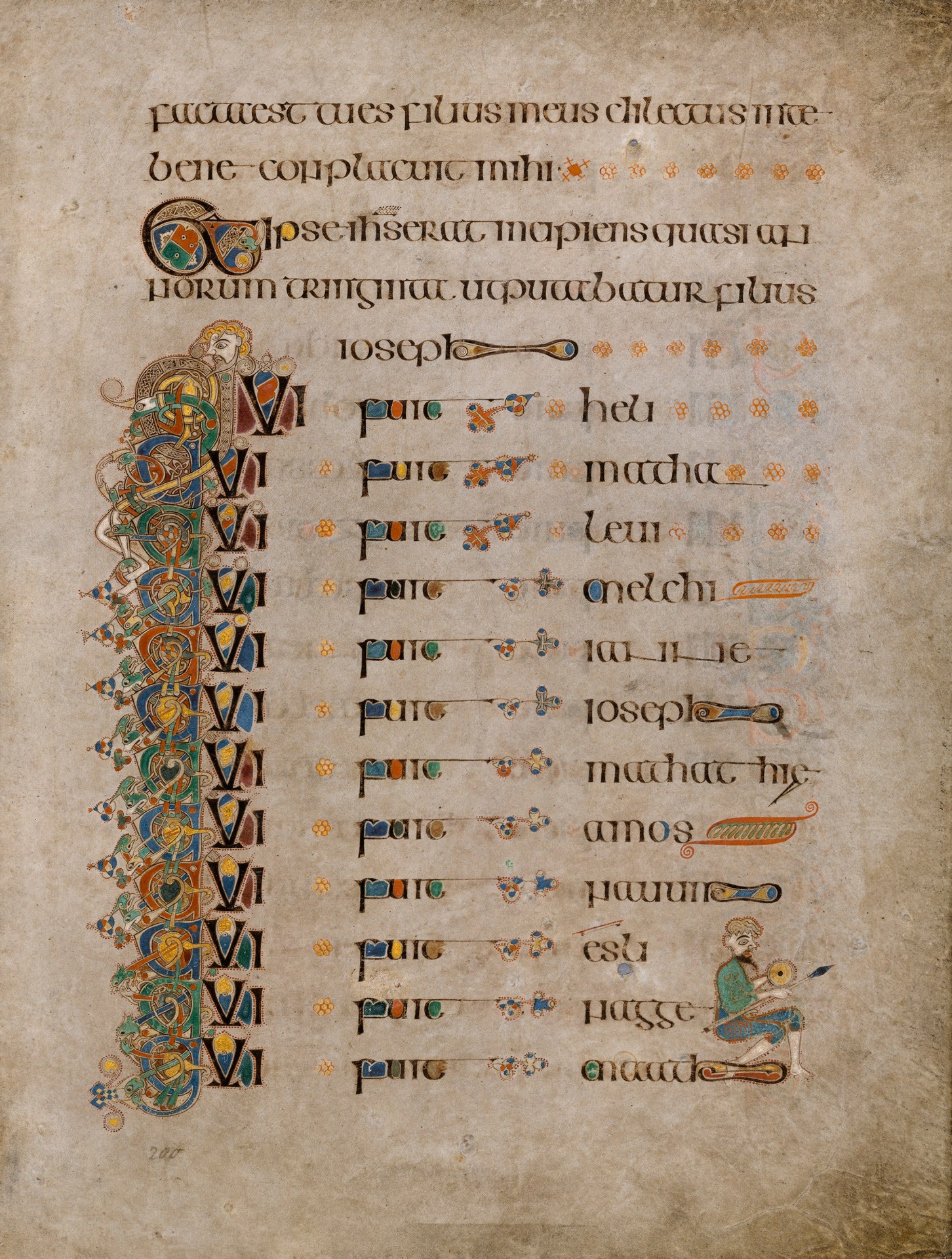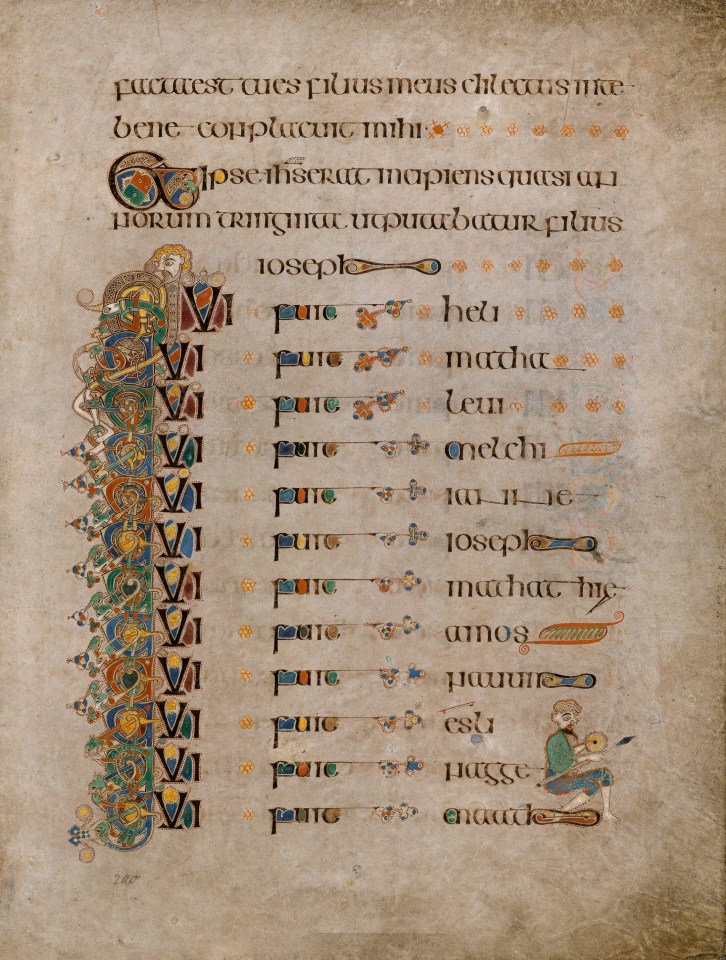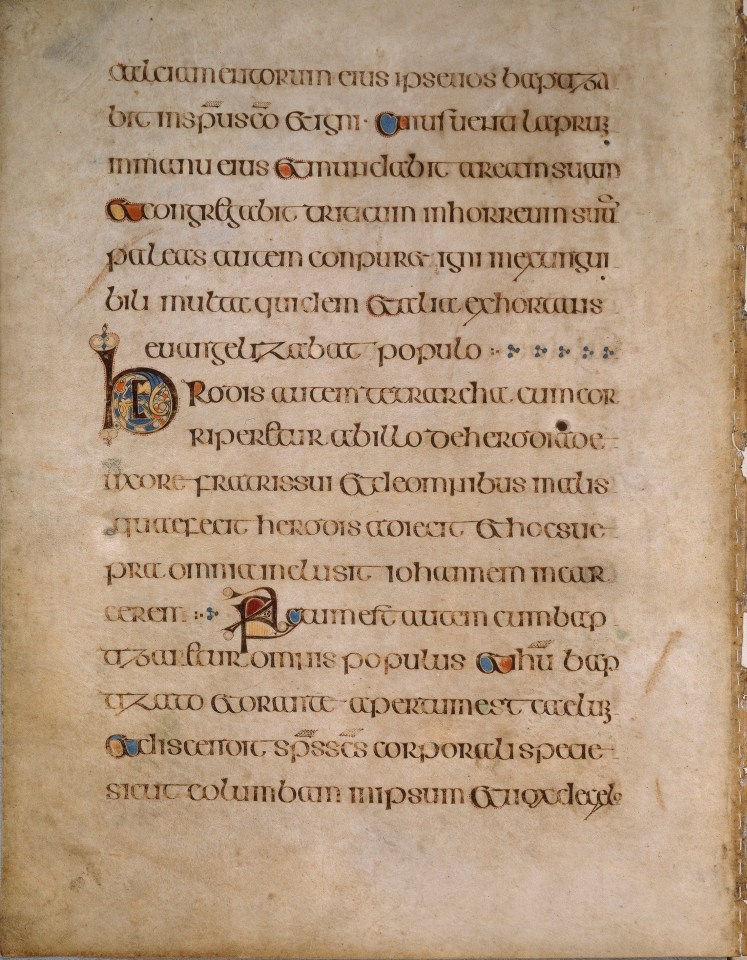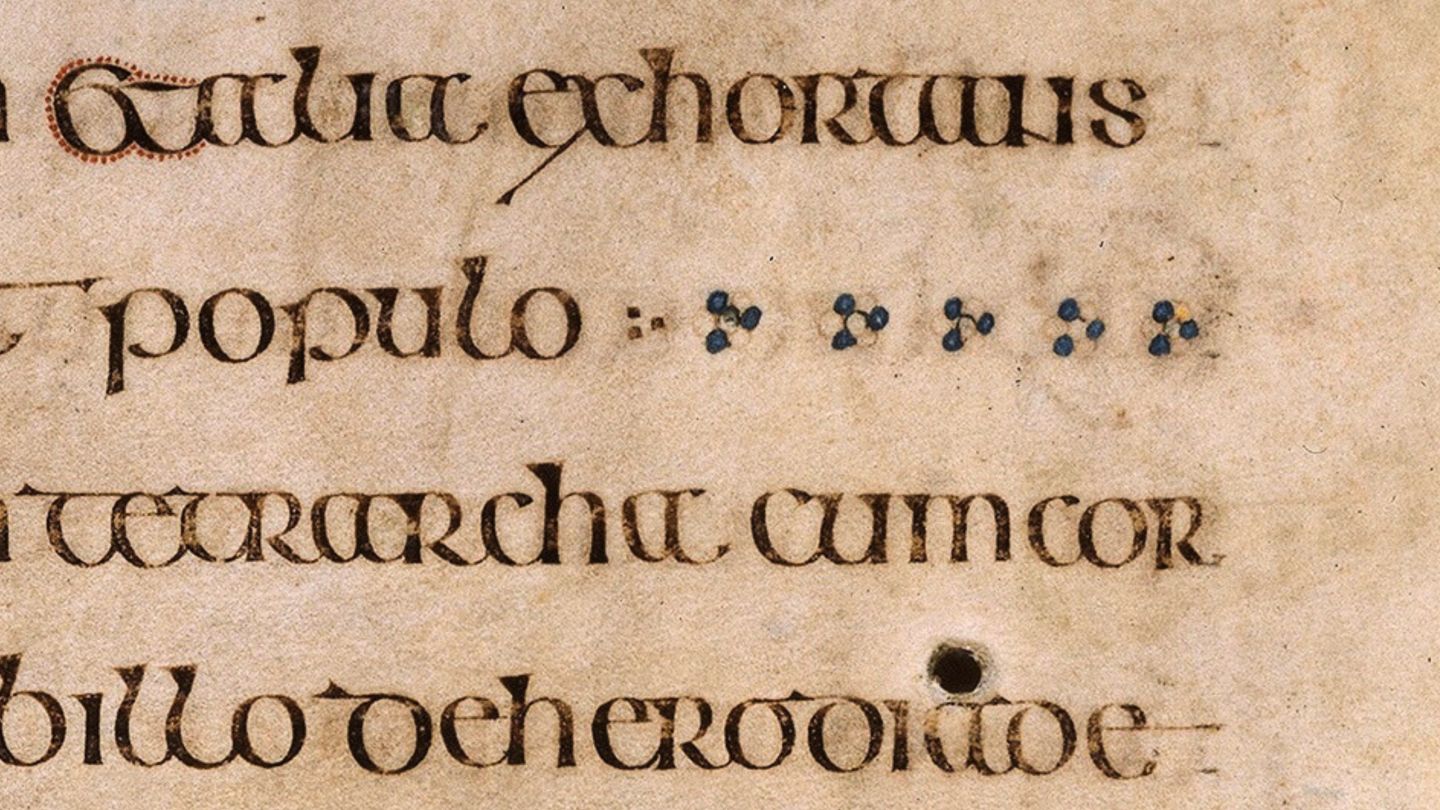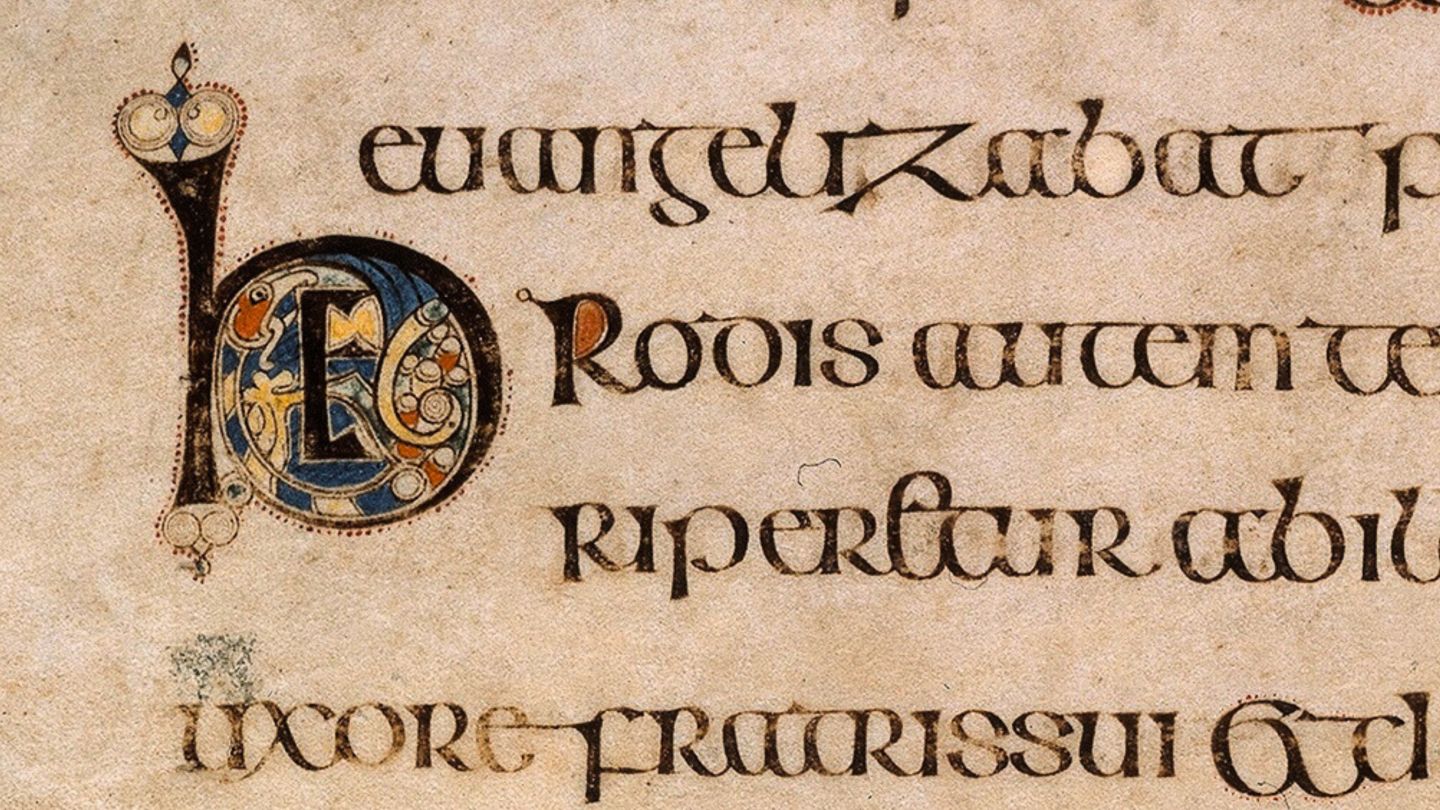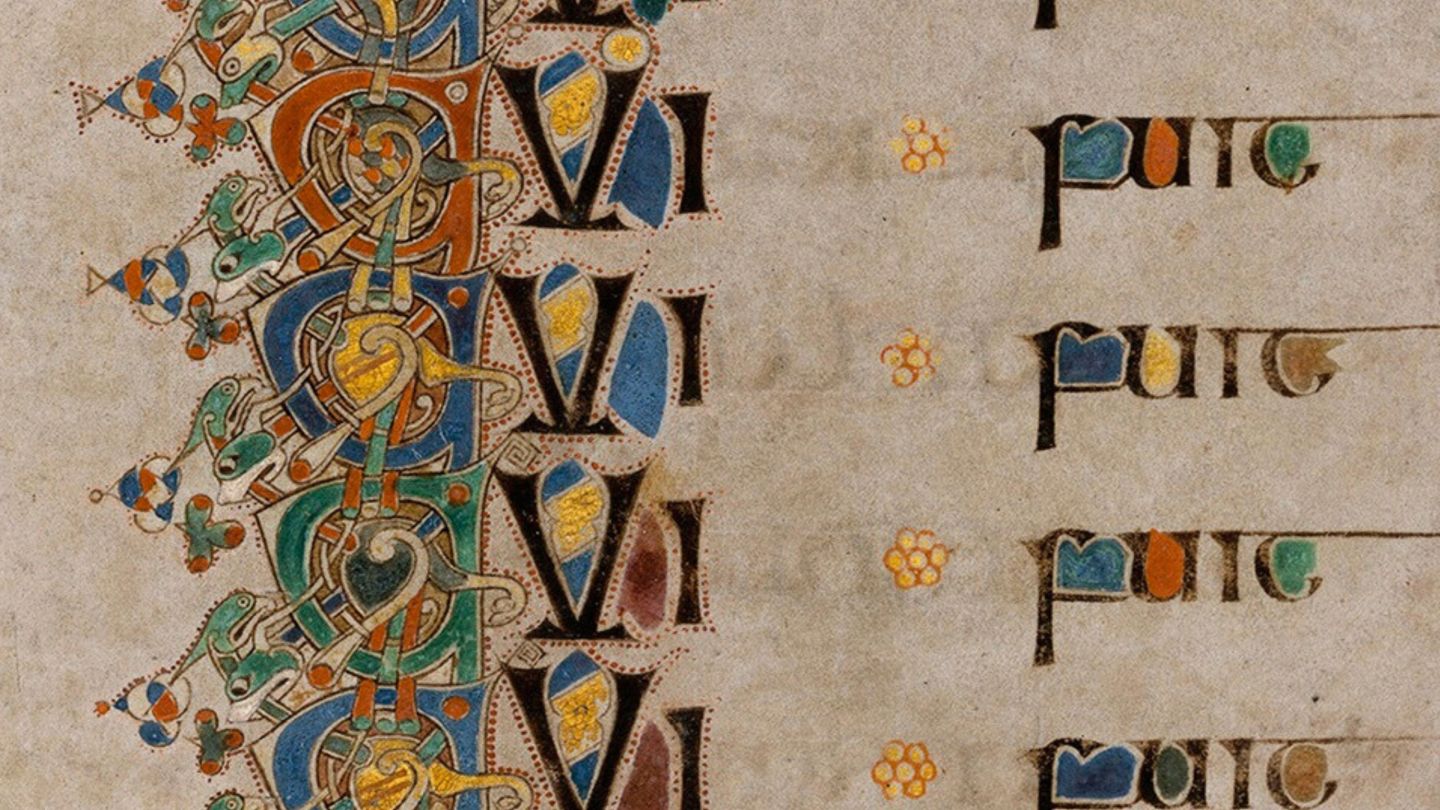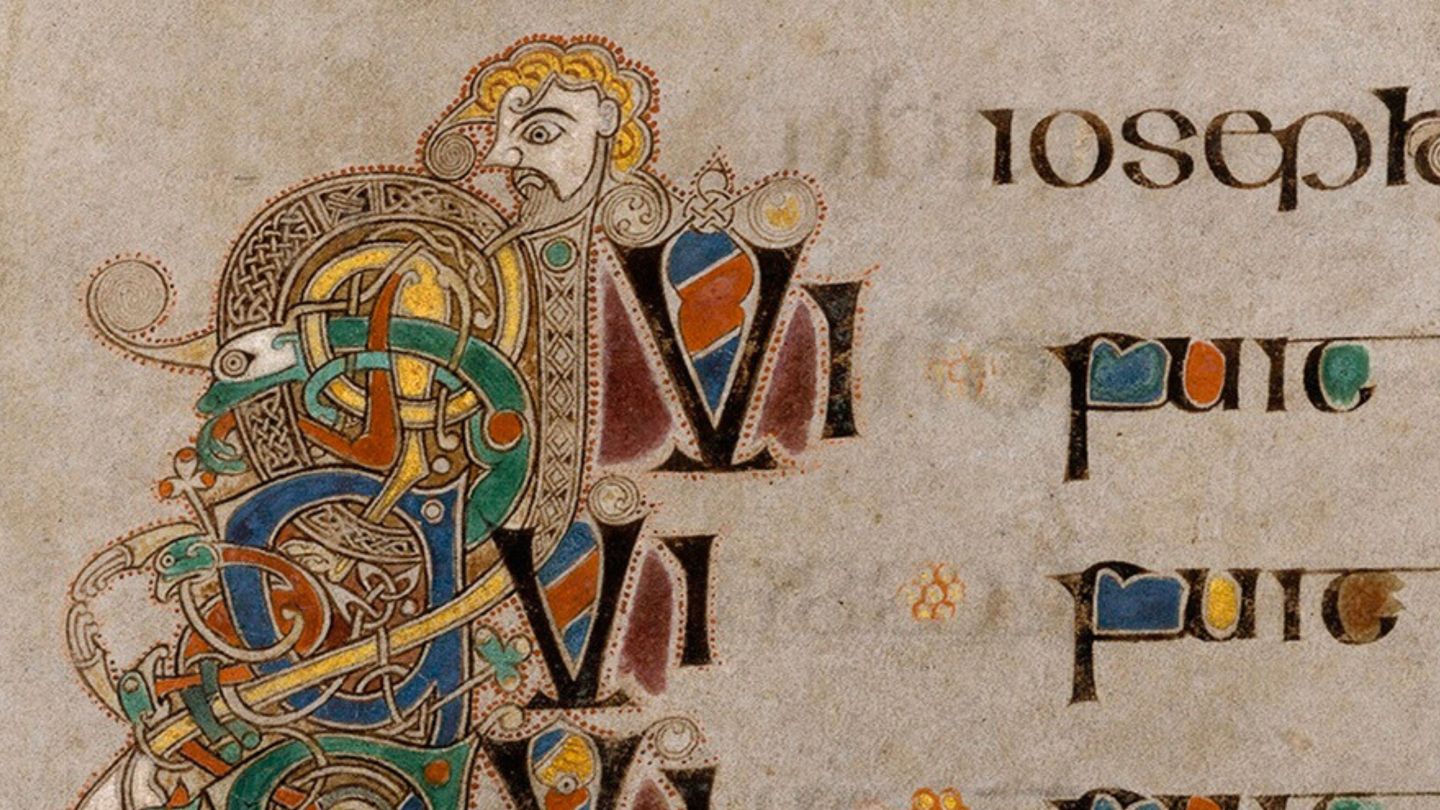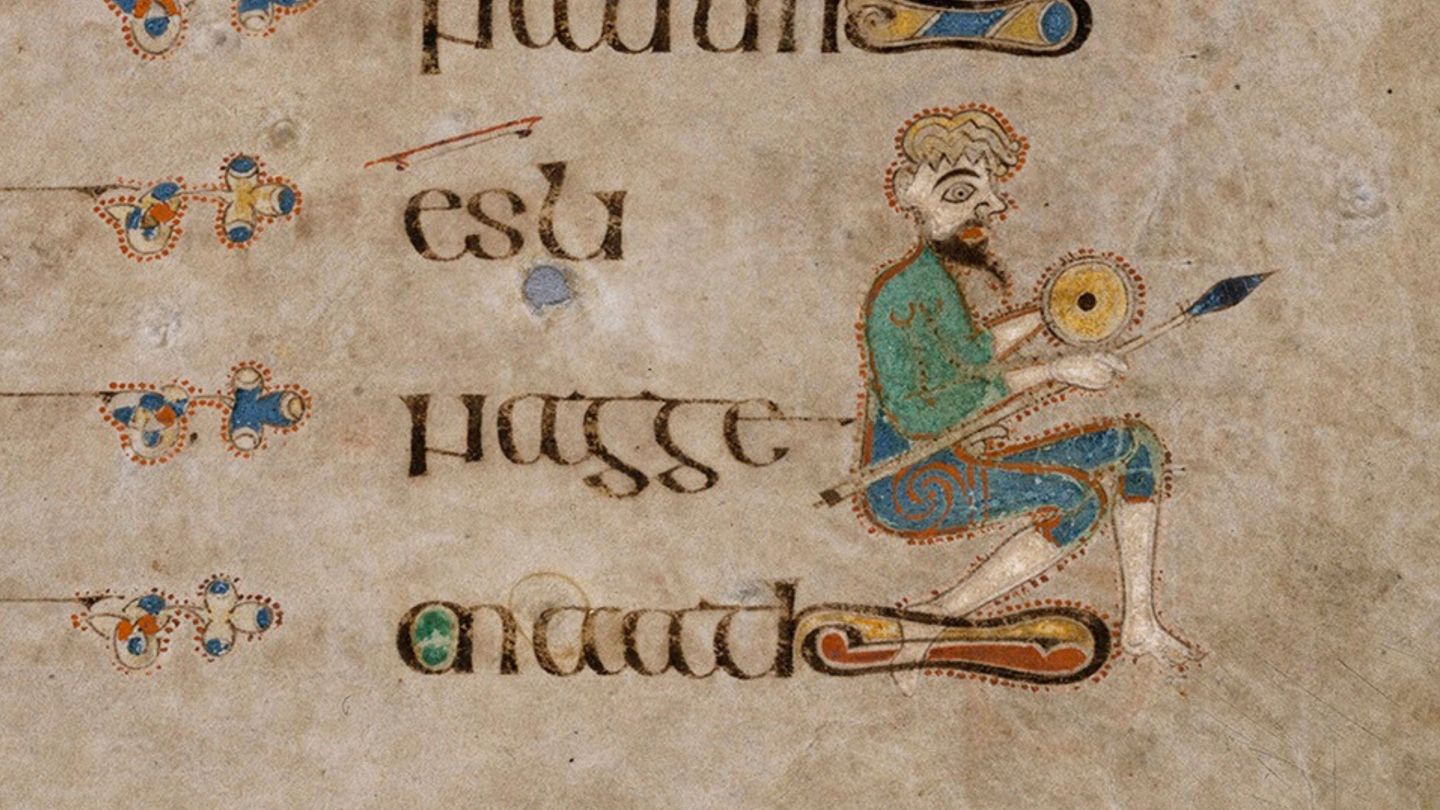
Folio 199v concludes the ministry of John the Baptist and recounts the baptism of Jesus. On line 2 the words ‘Spirito Santo’ ‘Holy Ghost’ are contracted or shortened, indicated by a flourish above the words which lets the reader know to fill in the missing letters from the middle of the word.
On line 8 of folio 199v, emphasis is placed on the large H for Herod, ‘Herod autem tetrarcha’ ‘Herod the tetrarch’. The H has a thick, black outline with the E placed inside the H, drawing attention to the fact that it was Herod who had beheaded John the Baptist and sent Jesus to his trials and eventual crucifixion.
